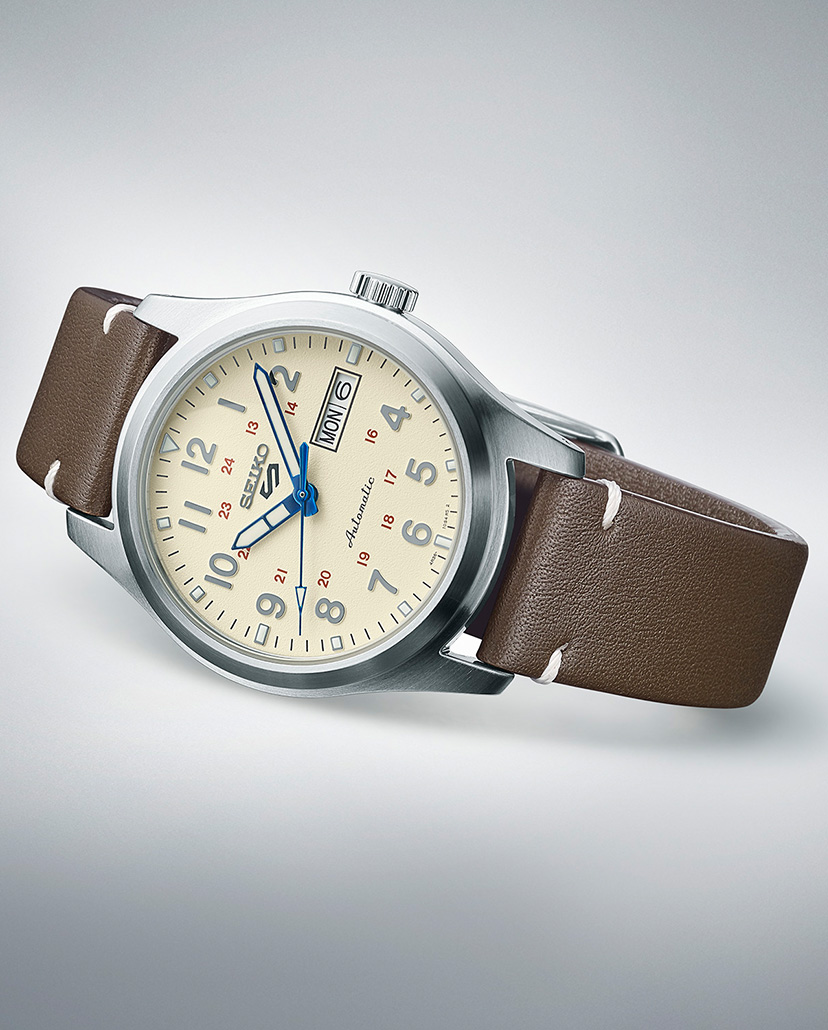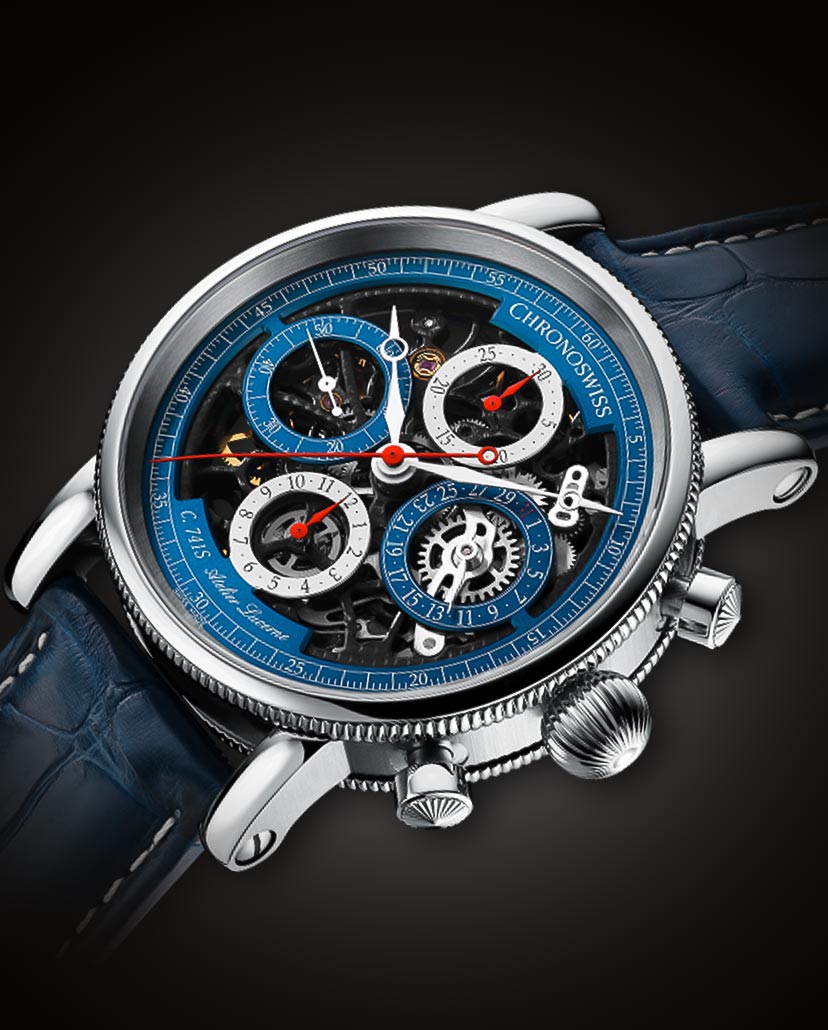Watch GlossaryComplications
Watch complications refers to any features that go beyond the usual time telling ones of hours, minutes, and seconds, such as day or date display, power reserve, flying tourbillion, and more
May We Recommend
What Are Watch Complications?
Understood typically as watch functions, watch complications are features that give the timepiece its arguable utility. In the present day, the term ‘complication’ refers to any function beyond basic timekeeping. In the early 1500s, when the tools of time measurement were scarce and timekeeping was moving towards a rather personal format, the next big innovation for watch makers was to assemble functions that improved the aesthetic of the watch along with its usability. With the advent of pocket watches, watchmakers began innovating modern complications. Early complications were limited to the minutes hand, but post the 1700s improved engineering methods led to grand complications, such as the seconds hand.

A modern-day complication refers to any feature in a watch that goes beyond the usual time telling ones of hours, minutes, and seconds. A simple watch complication is an added feature like a day or date display on the dial. The more the number of complications on the watch, the more intricate is the design. A typical date display chronograph has up to 250 parts, while a complex watch with multiple complications has over 1,000 parts. The more the functions in a timekeeper, the more complications involved.
The Franck Muller Aeternitas Mega 4 is the world’s most complicated wristwatch made of 1,483 components, a 1000-year calendar, and 36 complications; 25 of which are visible. Watch brands such as Breguet, Patek Philippe, Jaquet Droz, are pioneers in watch complications. These brands patent their complications and produce limited edition watches with the desired complication. Each specific part of the timekeeper can involve a unique function that adds on to the complication. Certain complications are added for the visual effect rather that its usefulness. Complications currently considered as essential are the alarm, minute repeater, annual calendar, split second flyback chronograph, double time zone, moon phase, perpetual calendar, power reserve, etc.
Below is a compiled list of watch complications concerning watches, dual time zones, date, and chronograph.

Examples Of Watch Complication Types
Alarm
Found on manual, automatic, and quartz movements, this function is set outside the main time to ring out loud and inform the wearer of an event they wish to be reminded about. On some watches, the wrist movement itself winds up the alarm, while other require manual winding.
Minute Repeater
This movement chimes out the time with the activation of a lever on the side of the case. This complication was commonly found in pocket watches manufactured during the 18th and 19th centuries, and is now produced as a collectable, rather than a tool.
Moonphase
A traditional and aesthetically pleasing feature, the Moonphase complication shows if it is a full, half, quarter, or new moon. Originally, it was primarily used by sailors to gauge tides.
Power Reserve Indicator
This function, found in mechanical watches, records the amount of power in the watch after the tension caused by the mainspring and displays. Watches with over 10-day power reserve, will display an indicator showing the days, not hours.

Foudroyante/Jumping Seconds
A foudroyante alias jumping seconds hand moves swiftly on a watch dial, and depending on the speed of the movement, makes just few brief stops during its one full rotation per second.
Tourbillon
While there is no evidence that the tourbillon has had any positive effect on mechanical movement accuracy, this complication was designed to nullify gravity that interferes with accurate timekeeping. The tourbillon style escapement assembly creates a cage that spins the balance wheel and their associated parts around on their own axis (once every 60 seconds), thus balancing the entire watch axis and keeping the accuracy intact.
Dual Time Zones
Dual Time Zone complications help determine the time in another time zone.
Dual Movement
The dual movement is 4a watch that contains two separate movements, each with their own power source.
Dual Time
Both displays on the watch run on the same movement.
GMT (Greenwich Mean Time) with Fixed Hour Hand
This GMT complication of an additional hour hand, introduced by Rolex in the 1950s, makes any watch a pilot’s watch. This hand completes one rotation around the dial per day. Pointing at 12 o’clock indicates midnight and pointing at six o’clock indicates noon.
GMT (Greenwich Mean Time) with Independent Hour Hand
This hour hand is independent of the 24-hour hand, which completely changes the functionality of the watch.

World Time Zone
This feature has a rotating inner bezel with 24-hour display, and an outer bezel that lists the major cities in the 24 time zones. While the wearer sets the outer bezel, the inner bezel marked to 24, makes one complete rotation per day.
Date Complications
Date Window
This aperture/window displays the date for the day.
Big Date
This display is much larger than the usual date aperture and can even have two windows for better legibility.
Pointer Date
Nicknamed the ‘Bankers’ date, this central hand has an arrow or crescent pointing to the date along the outside periphery or chapter.
Subsidiary Dial
Displays the date on a small sub-dial and is most often used with other complications.

Day-Date
The Day-Date adds the day of the week to the date complication. It is typically set using the crown; moving it in one direction changes the day, while the other direction changes the date. It may also be set using a small, indented button on the side of the case with a special tool called a stylus.
Triple Calendar
Also called a ‘complete calendar’, the triple calendar is a further elaboration of date display, adding not only the day of the week but also the month of the year.
Perpetual Calendar
This complex function of the Perpetual Calendar accurately displays the date, day, month, and year, and even leap year. The standard features of this perpetual calendar, includes measurement in minutes with difference between the ‘calendar time’ and actual ‘solar time’.
Annual Calendar
This complication that falls between perpetual calendar and triple calendar is not programmed to take leap years into account.

Chronograph Complications
One Button Chronograph
Chronographs in the early days were known as monopoussoirs or one button chronographs. Breitling introduced the two-button chronograph in 1923. The one button model cannot measure interrupted time spans while the two-button chronograph can.
Flyback Chronograph
The Flyback chronograph is designed to immediately start again from zero when a second button is pushed while the chronograph is running, and all the counters reset. Specially designed for pilots, the flyback chronograph ensures that split second accuracy for right navigation.
Split-seconds Chronograph
This chronograph type comes with three pushers on the case. It has two second hands on top of the other.






